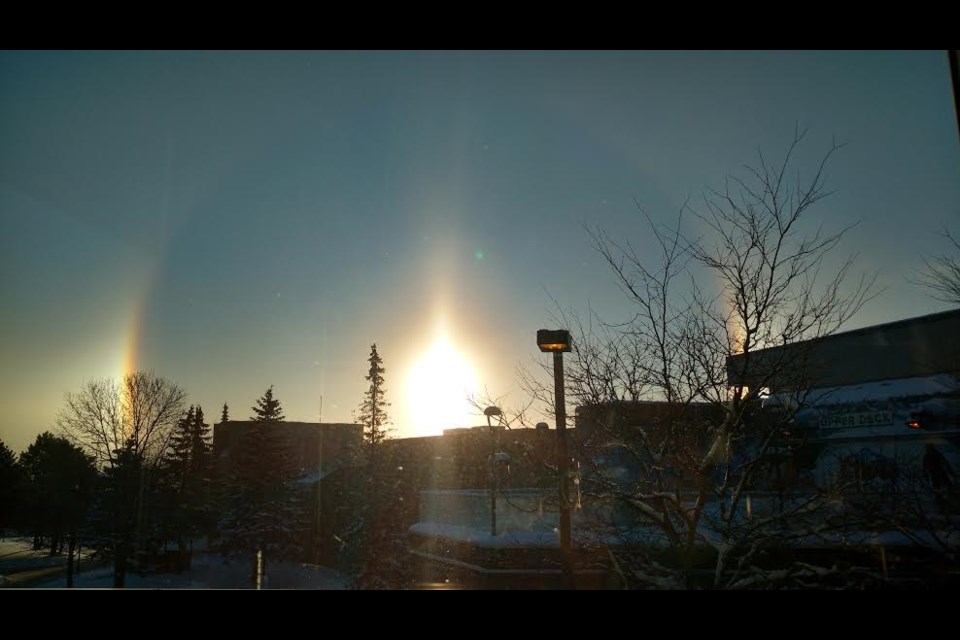Barrie was treated to an Arctic air phenomenon Thursday morning brought to our attention by reader and Georgian College student Shubham Rattan.
"This morning a rare atmospheric phenomenon was observed by me. A halo around the sun was observed in Barrie at 8:30 a.m. I wanted to share this with all the residents of Barrie so that we can appreciate the beauty of natural events," said Rattan.
What the environmental technology student saw was courtesy of frigid Arctic temps. The wind chill Wednesday was minus 28. Thursday morning it was minus 24.
"It's rare but it's not unusual," said Desjanelle Matthews, severe weather meteorologist with Environment Canada.
"With these really extremely cold temperatures you get these ice crystals in the atmosphere. Sometimes you can't even see the ice crystals but you just see the effect of them. It can happen when these really cold Arctic inflows come with this cold Arctic air."
The halo can appear like a rainbow take a couple of forms.
"There are a number of different optical phenomena caused by ice particles refracting and reflecting sunlight. A halo is one, a pillar is another, a sundog is like a partial halo," explains Dave Sills, severe weather scientist, Science and Technology Branch, Environment and Climate Change Canada.
"The ice particles are often in high-altitude clouds (cirrus type clouds) so the halo appears to be distant. But due to this very cold weather, we are seeing some ice crystals floating near ground level, called diamond dust. These can also produce halos and pillars that seem much closer."
Sills says he saw a halo on Highway 400 near Bradford on Wednesday.
"The diamond dust is really part of an ice cloud of sorts, that forms like fog. But since temperatures are so cold, instead of cloud droplets we see thousands of tiny ice crystals. I think the diamond dust phenomenon is not uncommon in the Barrie area when the temperatures get really cold. It's a regular occurrence in the far north in winter."
The type of optical phenomenon you see depends on where the ice crystals are and where you are relative to the sun. So different observers at different locations can see different things, Sills explains.
"The phenomena are related to those that we see in summer - rainbows for example. And even in summer the clouds at high altitudes are composed of ice crystals so we see things like sundogs and sometimes halos," he said.
And what you see can depend on where you're standing. From my vantage point at the north shore of Kempenfelt Bay, I witnessed a pillar.
Rattan captured the entire halo.
"It really depends on the three components: The crystal, the viewer and the light. So maybe where they were standing the crystals were oriented slightly differently according to where that reader as opposed to where you were. Because it's all about the geometry of the light. So depending on exactly where you are you could see slightly different things."



